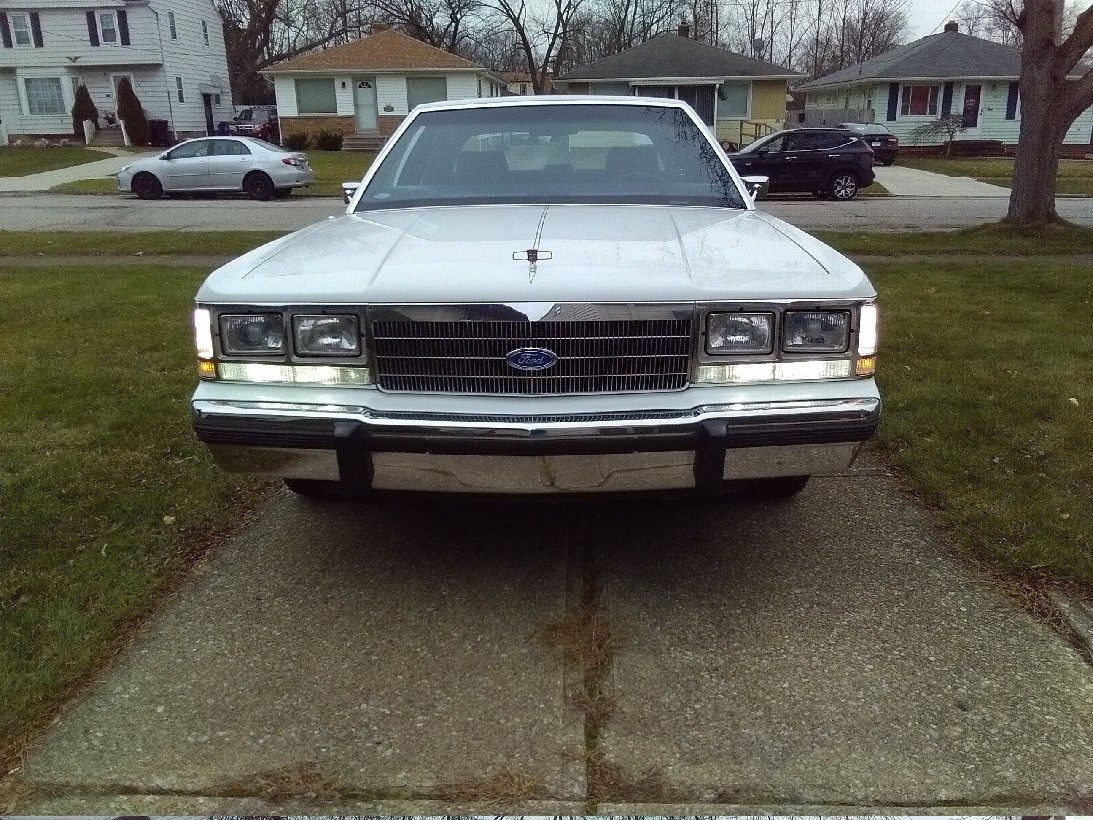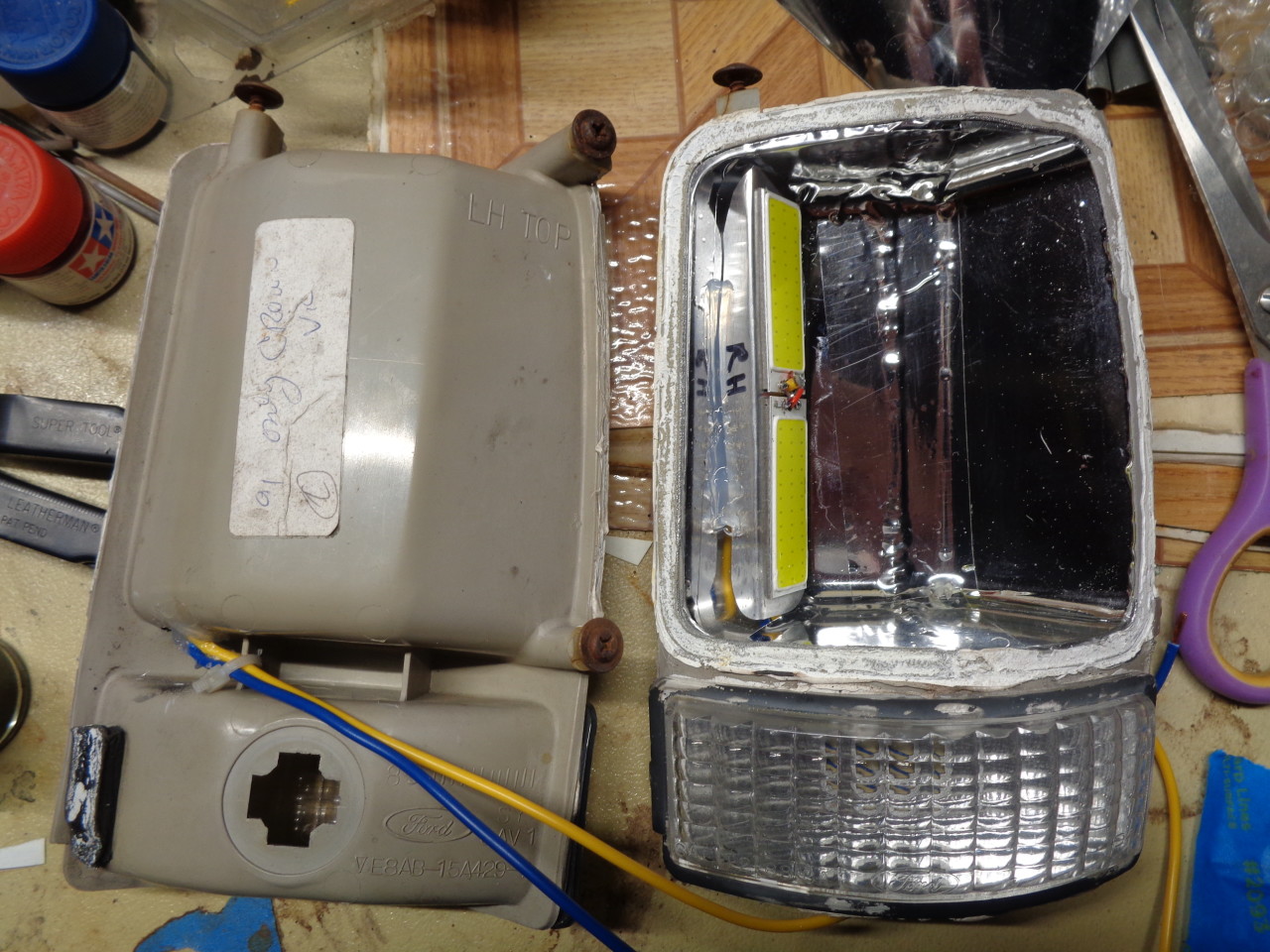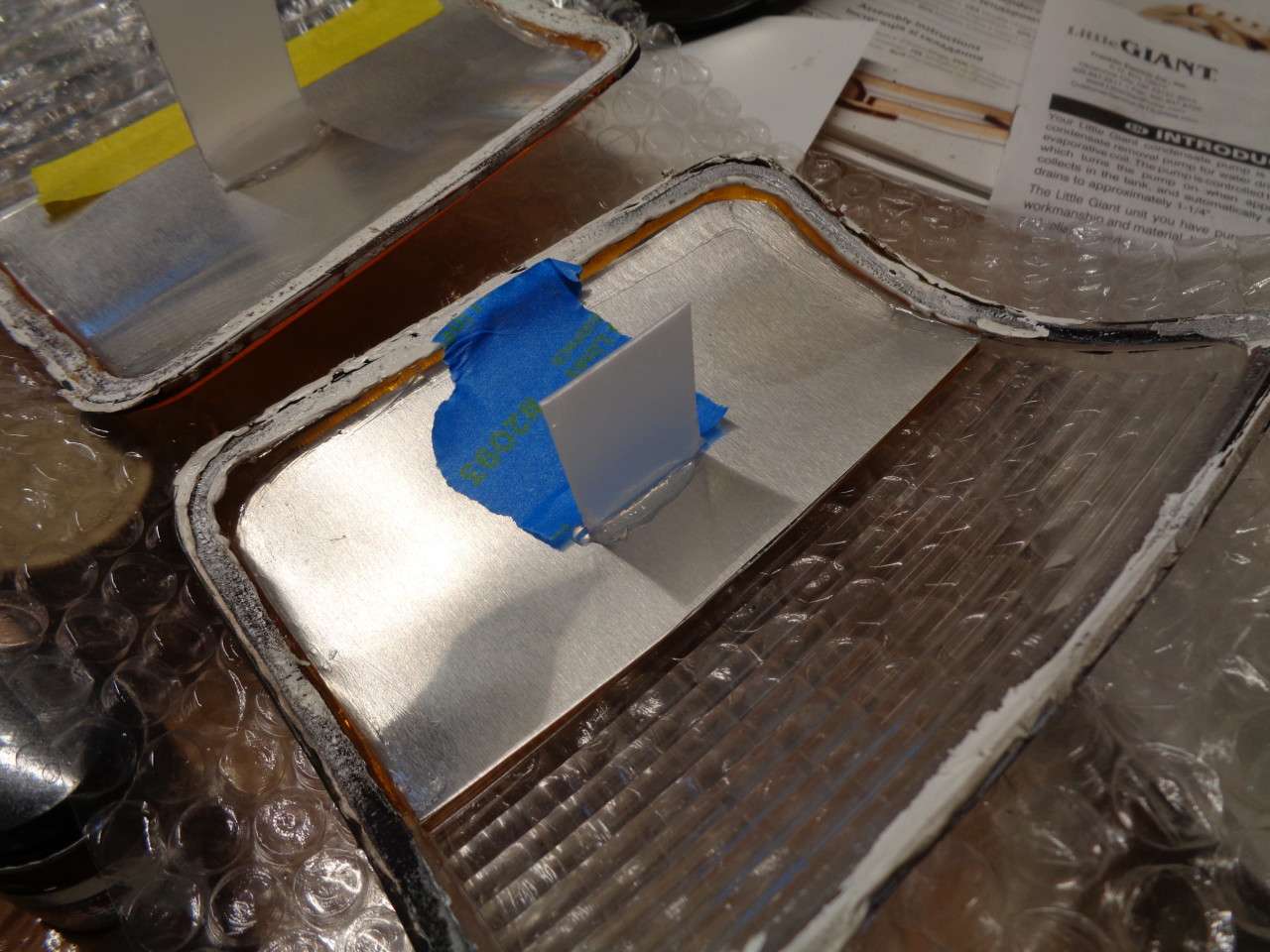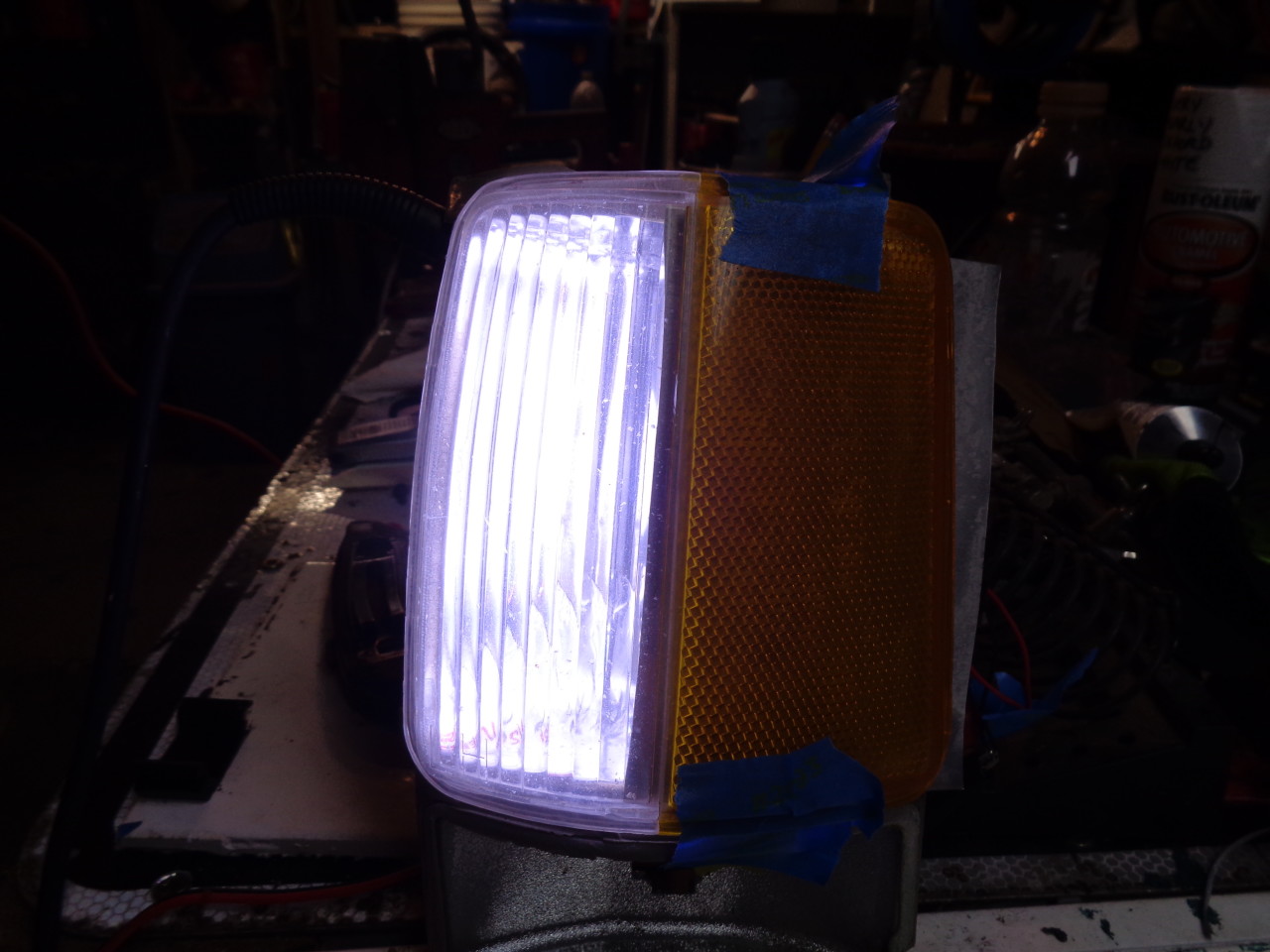- Nothing special
You must be logged in to rate content!
5 minute read
I'm the first to admit to being old and crusty, but sometimes even I see something new and actually like it. So here's how I added a little modern touch to my 20th-century ride.
The first thing you might notice is the white DRLs beside the headlights. On a Crown Vic, these lights aren't lights at all; they're just decorative lenses. That always sort of bothered me, and I wanted to have them do something, even if that something isn't terribly important. So I made them into daytime running lights. Actually, just plain running lights, since they don't cut off when the headlights are on. So if anyone else wants to try it, here's how:

First step is to crack the lights open. Originally the lenses were heat-welded to the housings, but after 35 years that bond isn't very strong at all. Run a knife around the edge and the lens pops off in one piece. The lower part of the lamp is the sidemarker light, which has an amber LED in it.
That ridge down the middle separates the side reflector portion from the decorative lens. I don't know why, neither is illuminated. I suppose it stops the amber from bleeding into the decorative portion. Anyway, the divider is gone, and a pair of panel LEDs (I used these as hood and trunk lights as well) on an aluminum wedge goes in there. The unit on the left shows how the wires exit. Zip-tie acts as a strain relief.

On the lens side, some aluminum flashing blocks off the amber reflector, and a bit of translucent plastic (cut from a Crystal Light container) serves to blur the seam between the two LED panels. Chrome vinyl on the outside of the flashing lets the reflectors still reflect without loss of dazzle.
Proof of concept:

Putting the lights at the very back lets them reflect off the sides of the housing. This was never meant to be an actual light, so a bit of experimenting is needed to make it visible from all angles. But there was still a problem: the light is too blue. I could almost live with it, but OCD overruled that.
I don't seem to have any pics of the amber color-correction gel I used. But I used amber color-correction gel (actually not a gel, that's just what they call it). So now the lights shine nice and white.
Was I done yet? Hell no. Let's get fancy.
If you are having trouble seeing this video, watch on YouTube
Yeah, the lights go out when the turn signals are on on that side. This was surprisingly easy. Power the + side of the DRL with whatever ignition-hot source you can find (they draw 0.4A combined) and run the grounds thru a pair of 5-pin relays. The ground sits on pin 87, which the relay tries to switch to 87a when the cornering light (down there in front of the wheel) triggers the relay. But there's nothing connected to 87a so the light goes out. Easy, right? Sure it is, now.
You may have noticed the white running lights aren't period-correct, and the video shows they flash amber. That's just replacing bulbs with switchback LEDs. Here's another hack:
Before pic of blinker (my pics from 2019 and 2020 have left the building, so you'll have to click on it. Notice that only the inside half of the turn signal is actually a turn signal. The outer half is just a running light. That bothered me, too, so I opened up the housing and stuck another switchback in there. Which created another problem.
Because there was now another blinky light in the circuit, the resistors needed for the switchbacks to work were all screwed up. The outer light wasn't meant to blink, and now it does, and with the lights on, it didn't want to with the 6-ohm resistor I was using. But it blinked just fine with 10 ohms. I'm not really sure why that is, it just is. So rather than do the "my blinker is broken" dance with the turn signal stalk, I put more damn relays in, one for each side, again using terminals 87 and 87a to switch between the 6- and 10-ohm resistors, relays triggered by the running lamp circuit.
Geeked out yet?
The headlights use relays, too, but only to protect the fragile 35-year-old wiring. The switch now carries less than half an amp, the relays doing all the heavy lifting. Installing headlight relays is pretty straightforward so I won't get into it.
The headlights themselves are Hella E-code lights, with 55/65W and 100W high beams. Blue-coated bulbs shine white. Original equipment was 35/45W Wagner halogens, which lit up about as well as you'd think.
-----------------
I should add that switching off the DRL with the turn signal is, in this instance, totally unnecessary, but once I figured out that I could do it, I had to do it. Because I went to the trouble of figuring out how.
If you don't have cornering lights (you poor soul) You may be able to tap into the turn signal before the flasher. But that's for you to figure out.